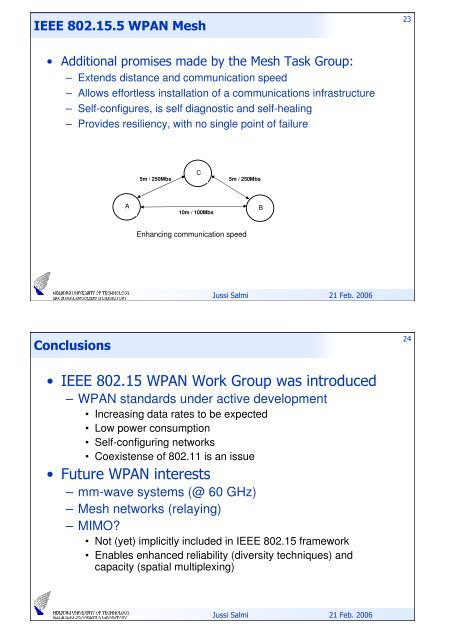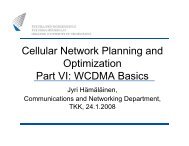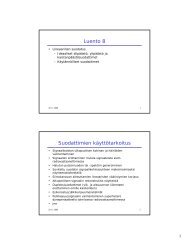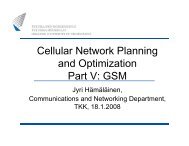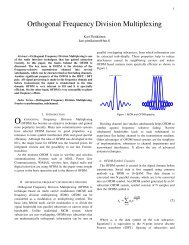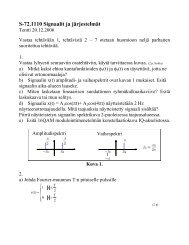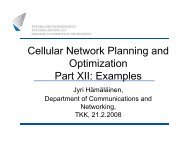WPAN – Wireless Personal Area Networks 1. Introduction and ...
WPAN – Wireless Personal Area Networks 1. Introduction and ...
WPAN – Wireless Personal Area Networks 1. Introduction and ...
You also want an ePaper? Increase the reach of your titles
YUMPU automatically turns print PDFs into web optimized ePapers that Google loves.
IEEE 802.15.5 <strong>WPAN</strong> Mesh<br />
23<br />
• Additional promises made by the Mesh Task Group:<br />
– Extends distance <strong>and</strong> communication speed<br />
– Allows effortless installation of a communications infrastructure<br />
– Self-configures, is self diagnostic <strong>and</strong> self-healing<br />
– Provides resiliency, with no single point of failure<br />
5m / 250Mbs<br />
C<br />
5m / 250Mbs<br />
A<br />
10m / 100Mbs<br />
B<br />
Enhancing communication speed<br />
Jussi Salmi<br />
21 Feb. 2006<br />
Conclusions<br />
24<br />
• IEEE 802.15 <strong>WPAN</strong> Work Group was introduced<br />
– <strong>WPAN</strong> st<strong>and</strong>ards under active development<br />
• Increasing data rates to be expected<br />
• Low power consumption<br />
• Self-configuring networks<br />
• Coexistense of 802.11 is an issue<br />
• Future <strong>WPAN</strong> interests<br />
– mm-wave systems (@ 60 GHz)<br />
– Mesh networks (relaying)<br />
– MIMO?<br />
• Not (yet) implicitly included in IEEE 802.15 framework<br />
• Enables enhanced reliability (diversity techniques) <strong>and</strong><br />
capacity (spatial multiplexing)<br />
Jussi Salmi<br />
21 Feb. 2006


